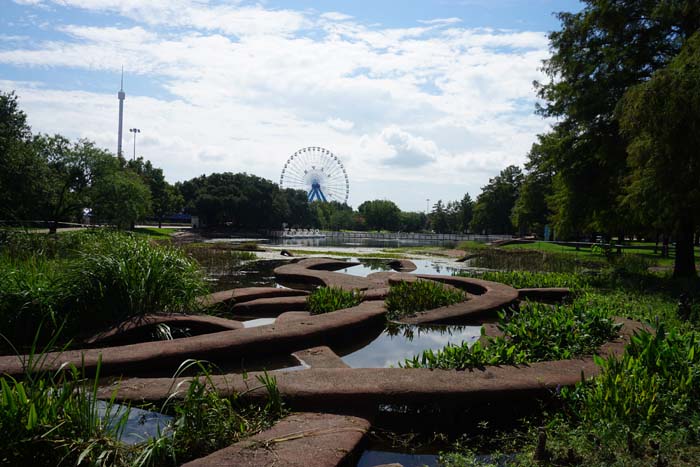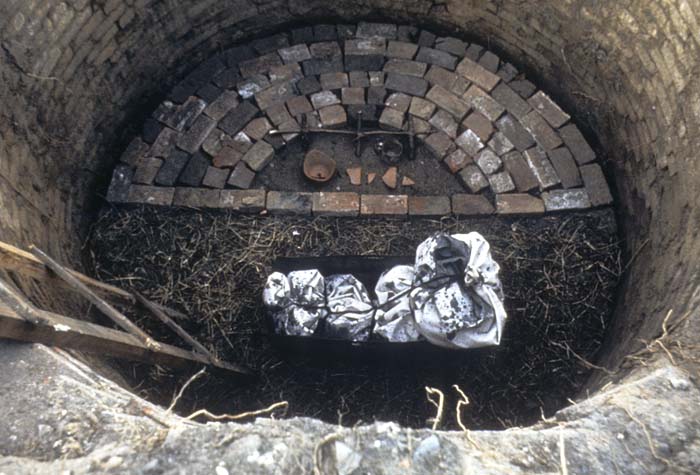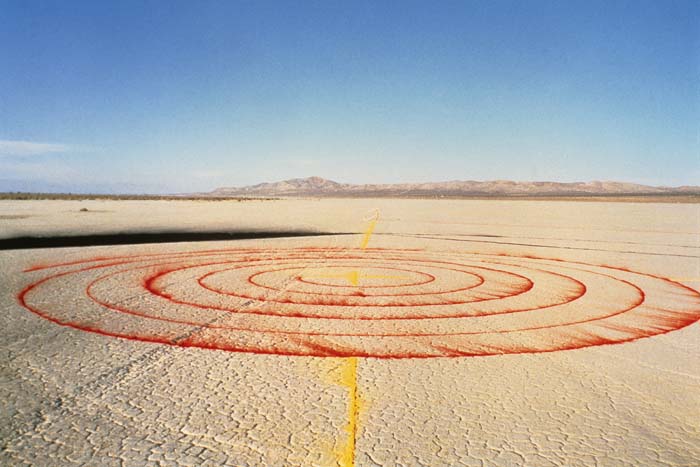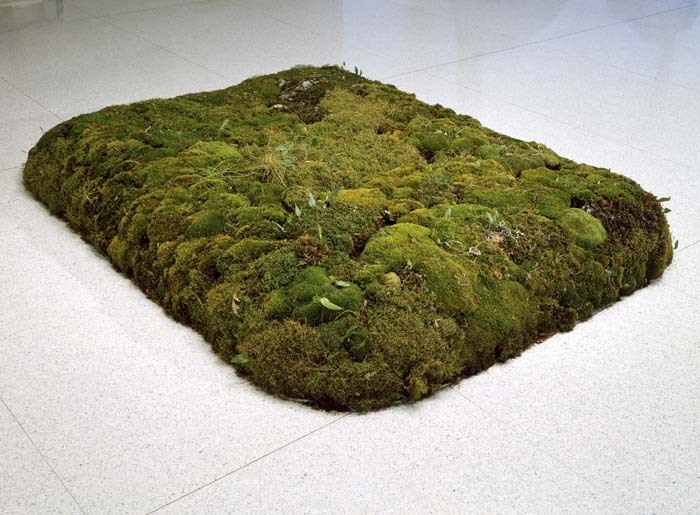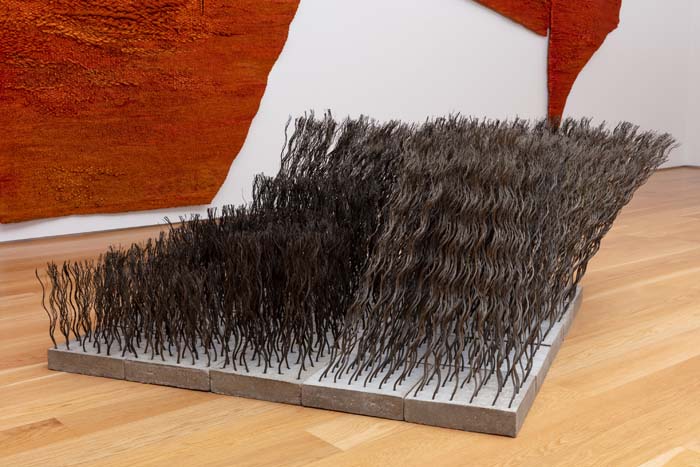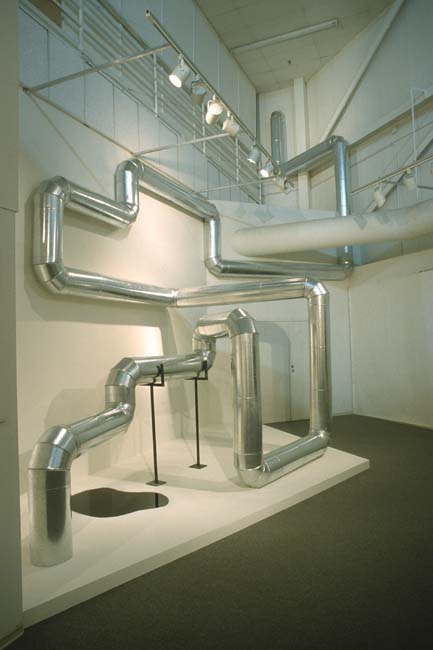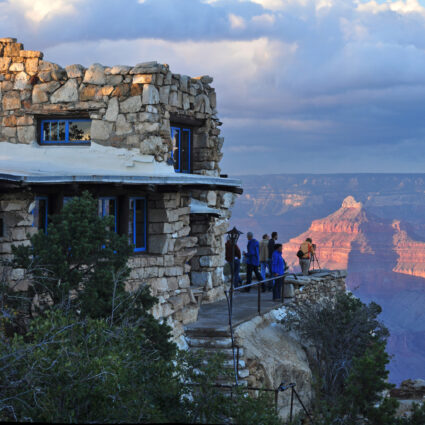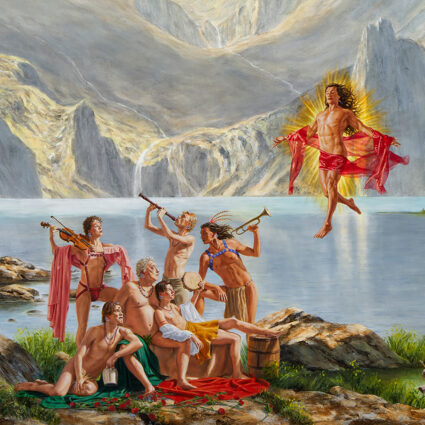Groundswell: Women of Land Art features twelve artists—some names familiar, some fresh—all working concurrently yet in the shadow of their male Land Art counterparts.
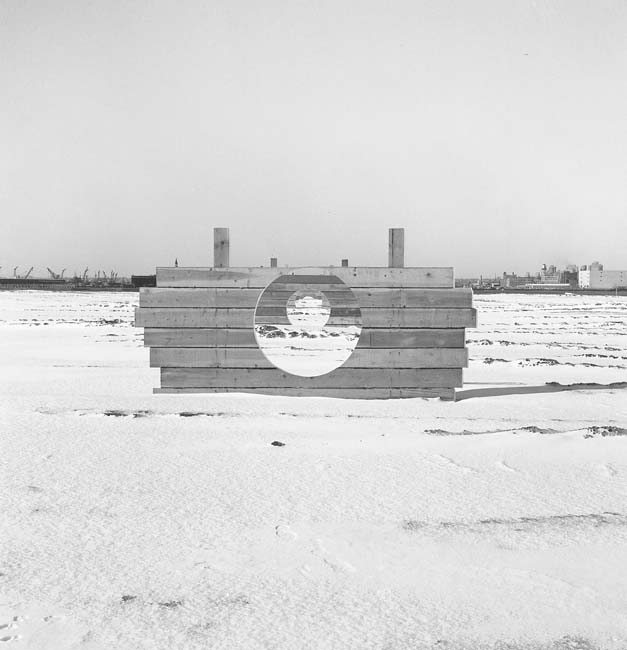
For artists working in the land, the surrounding environment and the viewer’s encounter is integral to the experience of the work. So how is that translated into a museum show? How do you communicate a work of Land Art minus the land?
“That’s probably the biggest challenge that one is faced with when trying to do an exhibition on Land Art,” curator Leigh Arnold tells me, as she prepares for the opening of the exhibition Groundswell: Women of Land Art at the Nasher Sculpture Center in Dallas. That particular challenge might also account for the dearth of dedicated Land Art exhibitions. “Every one of them is scrutinized greatly in terms of how the curator and how the organization has come together to communicate that really important aspect of Land Art—the experience.”
The exhibition at the Nasher includes historical recreations of works from the 1970s and early ‘80s, such as Nancy Holt’s Pipeline (1986), a sculpture first conceived of and installed in Alaska, now receiving a Texas treatment, and Alice Aycock’s Clay #2 (1971), a grid of clay left to dry and crack over the course of the exhibition. There will also be earth sculptures, living material, photographs, archival materials, maquettes and models, sketches, and paintings.
Groundswell features twelve artists—some names familiar, some fresh—all working concurrently yet in the shadow of their male Land Art counterparts. Many of these artists’ definitive earthworks have been destroyed, and live on only in documentation.
Marked by their fleetingness, some of these works were ephemeral marks on the landscape—such as Ana Mendieta’s Siluetas or Lita Albuquerque’s constellations of powdered pigments—but some were temporary installations in temporarily open spaces. New York’s Battery Park City—then a landfill formed from the dirt excavated to build the Twin Towers—hosted Mary Miss’s eye-boggling Battery Park Landfill (1973), before Maren Hassinger’s Forest (1980) of iron rebar dune grass and Agnes Denes’s enduringly powerful Wheatfield—A Confrontation (1982). It speaks to the resourcefulness of these artists, a quality shared between women artists in particular, Arnold says, that they could take a devalued wasteland, a landfill, and “the last remnant of open space in New York City,” and transform it into a site for public art.
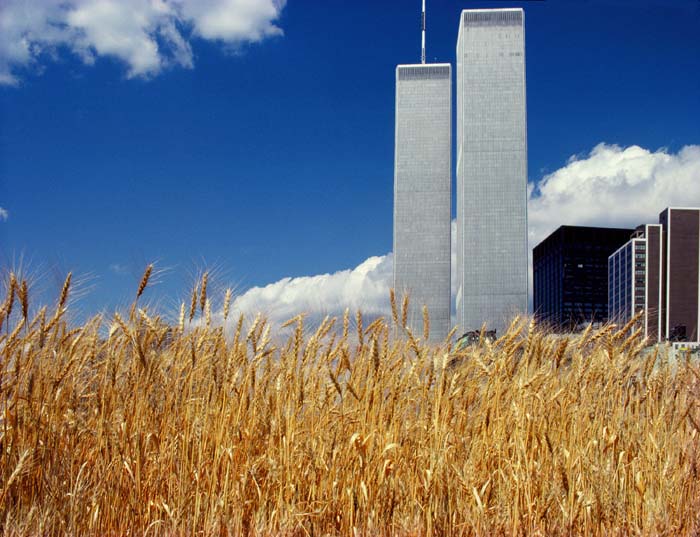
The land is not a blank slate, but rather informs the meanings of their works. Beverly Buchanan embraced entropy in her work, and, to a certain degree, obscurity, becoming known for her environmental installations only posthumously. Buchanan’s earthwork Marsh Ruins (1981), a trio of concrete markers submerging into the landscape near Igbo Landing in Georgia, was by design, left to decay, to sink into the watery earth of a significant and traumatic historical site, echoing the neglect and erasure of the painful histories of the South. Groundswell will feature photographs of her installations, along with notebooks, abstract paintings, and concrete sculptures, called Frustulae (ca 1978), that resemble monumental stones drawn from ancient ruins.
In Philadelphia, Jody Pinto embarked on a series of outdoor artworks in the 1970s when the Pennsylvania Department of Transportation excavated hundred-year-old cisterns and wells in the landfill behind her studio. Pinto, an activist who spoke out against sexual violence and founded Women Organized Against Rape in 1972, works in the intersections of the body and the land. “You can tell there’s this relationship she’s drawing between the treatment of women and the treatment of the landscape,” Arnold says. “With titles like Blue-Blooded Heart Landscape, Orange Split Lip Landscape [two drawings from 1979 in the show]—there are all these references to a body being traumatized that is synonymous with the landscape and what traumas are being inflicted on it.”
Incorporating Buchanan’s, Pinto’s and other voices into the canon of Land Art expands the conversation beyond the formal or conceptual, and veers into the interrelated discussions of land and activism, environmentalism, history, racism, colonialism, indigeneity, patriarchy, and feminism. In this way, too, Groundswell complicates the conception of Land Art primarily existing in inaccessible locations in the Southwest.
“This show is really pushing back against this long-standing narrative that Land Art only exists in remote locations or in the desert where there is ‘nothing’ but in fact those lands have been occupied by people for centuries,” Arnold says. “To me, Land Art is about the artists leaving their studios to do work that’s engaging the landscape. And that landscape could be just outside their studio in an urban setting.”
Some new works engage directly with the environment and surrounding ecology of Dallas and the grounds of the museum itself. Meg Webster, who has made field recordings of “virgin forests” near her home in New York, will present a new sound recording of a remnant patch of Texas Blackland Prairie in Dallas, “allowing people to be transported to another location—to think about nature, to think about different ecosystems while they’re in the gallery space,” Arnold says.
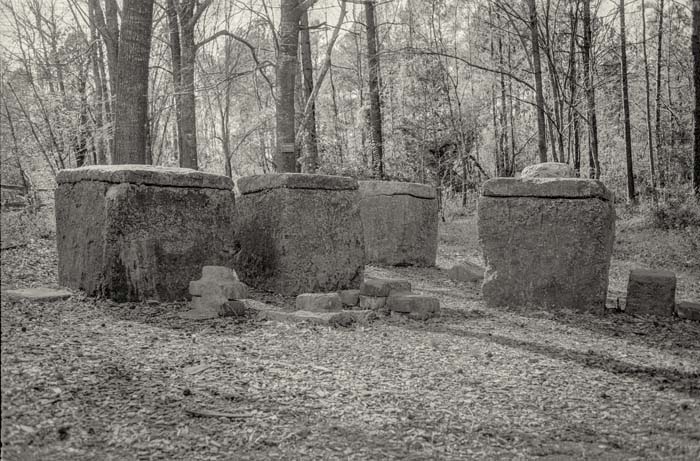
In a new site-specific artwork by Mary Miss, reflective, polished steel X’s cut across the Nasher’s sculpture garden along the path of a stream that flows right underneath the museum’s grounds and out into the Trinity River. Since her first outdoor installations in the 1960s, Miss has required a viewer to discover a landscape from multiple points of view, rather than assuming a singular vantage point.
“When you’re walking out of the building you might not notice them because their profiles are very slim, but when you start walking along the path in the garden, where the stream is running below, all of those X’s come together and coalesce,” Arnold remarks.
Walking tours will be offered to follow this buried stream to both its origin and outlet, “connecting the history of Dallas and the communities that were living there when the stream flowed on the surface, [and discover] what has been buried with that,” Arnold says. “I think this is one of the most beautiful and poignant artworks that I’ve ever been able to be a part of in some small way,” she adds.
Also nearby, and considered an off-site part of the exhibition, is Patricia Johanson’s landmark Fair Park Lagoon (1981-86), an ecological bio-remediation project that undertook the restoration of a previously polluted body of water. Arnold considers it one of the most successful examples of ecological public art. “And the fact that it’s just right down the street is so special for this exhibition,” she says.
Groundswell: Women of Land Art opens at the Nasher Sculpture Center on September 23, 2023, and runs until January 7, 2024. The opening weekend includes a two-day symposium taking place at the Nasher and Fair Park in Dallas.
